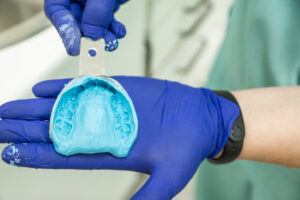Routinely using a scanner will allow you to utilise digital dentistry to unlock the full potential of your practice in addition to developing a more streamlined and efficient workflow for both orthodontic and restorative treatment. We will focus on orthodontic treatment in this article and discuss:
- The Scanning Process
- Planning Orthodontic Treatment
- Consent and Communication
The Scanning Process
Having a scan is much more favourable for the patient than having impressions which is just one of the reasons to introduce scanning to your practice from a patient point of view.
Scans are very accurate and unlike impressions, there is no need to wait for shipping, a scan will be on the IDS in 15 minutes and there is much less risk of the scan being rejected as you can check chair side that all the information is needed.
Ergonomics of scanning will help you or your team member scan in the most efficient and comfortable way. Here are four tips to help you achieve this:
- Lay the patient back in the chair
- Lower the patient’s head.
- Sit comfortably with your elbows at your side.
- Place the display screen on the dominant side to prevent strain.
Have a process for scanning and stick to it each time. The below image illustrates the most effective way to scan an arch:

Once you have taken your scan, evaluate the record before submitting it to ensure the following anatomy has been captured, to ensure well-fitting aligners:
- 2mm of gingival tissue
- Distal wall of the terminal teeth
- Mesial and distal inter-proximal anatomy
- Complete incisal / occlusal surfaces of both mandible and maxilla
- Accurate bite with the patient in centric occlusion
The Planning Process
Everything you do with models you can do with a digital scan. The iTero has a function that allows you to export the scan or simulation to an STL file, from here you can create digital wax-ups and print models for the restorative phase of treatment such as veneers or composite bonding.
This can be invaluable for the planning process, for example, if you are creating spaces to correct tooth size discrepancies before restorative, or you want to check you have created enough overjet to increase the length of teeth. Scans can be used for digital smile design processes and digital facebows for more complex cases, you can even scan a patient in CR for cases where deprogramming has been carried out.
Being able to plan every stage of treatment digitally before you even start treatment is a brilliant way of ensuring your vision for the smile is possible and comes to life. Planning in this way will help your treatment run smoothly and enable you to achieve the best possible outcomes.
Consent and Communication
Seeing is believing and being able to show the patient a digital simulation of what their smile could look like is incredibly powerful. Scans can help you communicate your vision to the patient and will illustrate what you are explaining to them, making your consent process much more effective and robust.
The Invisalign Outcome Simulator software is intended to provide a computerised approximation of possible teeth position, based on an algorithm, which can be achieved after Invisalign treatment. The simulated outcome includes the option to adjust tooth position using 3D controls similar to the ClinCheck software. You can share the outcome with the patient or submit the simulated outcome to be used as the desired result in treatment plan creation for the ClinCheck. The outcome simulator is not a replacement for ClinCheck however is a useful tool to help the patient understand the treatment before they make the commitment. A great tool for open days, the simulated outcome comes back in around 2 minutes so you can communicate your functional and aesthetic vision to the patient before you begin treatment.
To conclude, it is clear intraoral scanners can improve efficiency, planning, communication and consent, yet many clinicians are not making the most of their scanners. Consider asking yourself the following questions:
- Are you using your scanner to its full capacity?
- Are you getting your team involved?
- Are you scanning for orthodontic and restorative treatments?
- Are you using the communication and simulation tools available?
Article by Lydia Sharples





